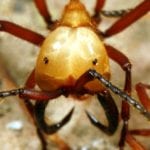 Technology
Technology  Technology
Technology  Our World
Our World 10 Ways Icelandic Culture Makes Other Countries Look Boring
 Misconceptions
Misconceptions 10 Common Misconceptions About the Victorian Era
 Mysteries
Mysteries 10 Strange Unexplained Mysteries of 2025
 Miscellaneous
Miscellaneous 10 of History’s Most Bell-Ringing Finishing Moves
 History
History 10 Great Escapes That Ended Right Back in Captivity
 Weird Stuff
Weird Stuff 10 Fascinating Things You Might Not Know About Spiders
 Food
Food 10 Everyday Foods You Didn’t Know Were Invented by the U.S. Military
 History
History 10 Odd Things Colonial Americans Kept at Home
 Weird Stuff
Weird Stuff 10 Superstitious Beliefs That Once Consumed Entire Cultures
 Technology
Technology 10 Scientific Breakthroughs of 2025 That’ll Change Everything
 Our World
Our World 10 Ways Icelandic Culture Makes Other Countries Look Boring
 Misconceptions
Misconceptions 10 Common Misconceptions About the Victorian Era
Who's Behind Listverse?

Jamie Frater
Head Editor
Jamie founded Listverse due to an insatiable desire to share fascinating, obscure, and bizarre facts. He has been a guest speaker on numerous national radio and television stations and is a five time published author.
More About Us Mysteries
Mysteries 10 Strange Unexplained Mysteries of 2025
 Miscellaneous
Miscellaneous 10 of History’s Most Bell-Ringing Finishing Moves
 History
History 10 Great Escapes That Ended Right Back in Captivity
 Weird Stuff
Weird Stuff 10 Fascinating Things You Might Not Know About Spiders
 Food
Food 10 Everyday Foods You Didn’t Know Were Invented by the U.S. Military
 History
History 10 Odd Things Colonial Americans Kept at Home
 Weird Stuff
Weird Stuff 10 Superstitious Beliefs That Once Consumed Entire Cultures
10 Utterly Vicious Creepy Crawlies
Nature is a beautiful thing, but it can also be downright terrifying. It’s a kill-or-be-killed world out there, and every creature from the largest whale to the smallest cyanobacterium wants a piece of the action.
Yet nobody does death better than the little fellers—the six-legged freaks, the eight-legged aberrants, and the winged butchers. Individually, these critters may be as different as night and day, but they’ve all developed methods of murder that would make Hannibal cringe.
10 Bone-House Wasps Build Corpse Walls
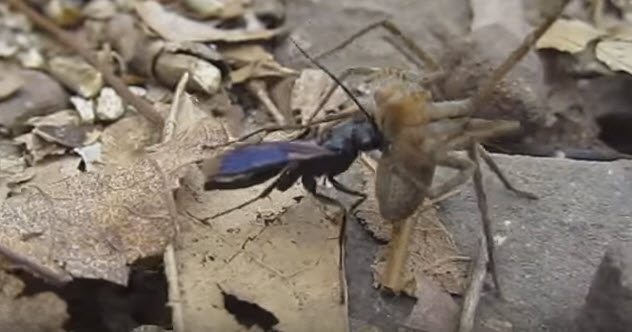
First described in 2014 and named after the bone-filled ossuaries of old, Deuteragenia ossarium is one ruthless son of a gun. It’s related to the more well-known tarantula hawk wasp, which lays eggs in live tarantulas and has one of the most painful stings in the world.
One researcher’s advice if you get stung by one is to “lie down and scream.” That sounds like a joke, but it’s legitimate advice. The pain is so excruciating that if you try to run, you might accidentally run into a barbed wire fence or break your leg in a hole.
But that’s a small horror compared to Deuteragenia ossarium, which researchers have taken to calling the “bone-house wasp.” Like its cousin, the bone-house wasp paralyzes a live spider and then drags the hapless arachnid to its nest. There, the wasp lays an egg inside the spider and entombs it behind a wall of ant corpses.
These ants aren’t the desiccated remains of past meals. Before it even goes hunting for its eight-legged baby incubator, the mama wasp slaughters the ants in preparation for the main event. The theory behind this is that the ants act as a chemical barrier to prevent parasites from latching onto the precious egg.
After a while, the egg hatches, and the wasp larva starts feeding on the spider trapped with it behind the corpse wall. The spider is still alive at this point. Then the infant wasp digs its way to freedom to begin life anew, born of the mortal remains of its mother’s slaughter. Now that’s parenting.
9 Oogpister Beetles Spray Their Enemies With Acid
South Africans have a special name for Anthia beetle species. They call them oogpisters. Translated, it means roughly “eye-pissers.” See, these beetles are ravenous ant killers, and their specialized diet allows them to concentrate the formic acid naturally produced in the ants’ venom. When threatened, the oogpister hunches down, raises the rear of its abdomen, and shoots a stream of acid at its attacker’s eyes.
Oogpisters can fire their Super Soaker as far as 30 centimeters (12 in) away, and their aim is remarkably good. Although the acid is relatively weak, it’s still strong enough to blind small animals and burn human skin. Charles Darwin supposedly got sprayed in the mouth by one.
But even stranger than the oogpister’s acid bath is what has evolved from it. Not surprisingly, these beetles are off the menu for most animals, so juvenile bushveld lizards (Heliobolus lugubris) have evolved markings that mimic the oogpister’s. They’ll even mimic the motion of the beetle’s acid blast if they feel threatened.
8 Hero Ants Sacrifice Everything
Deep in the forests of northern Madagascar lives a small species of ant called Malagidris sofina, a cliff dweller that makes its home in rocky outcrops and clay banks. The nests are nothing special, just a single chamber barely 7 centimeters (3 in) deep with a little clay funnel opening off the side of the cliff wall. Even the ants are hardly noteworthy, aside from being slightly rare. Just ants doing ant things.
At least, until an intruder tries to get inside the nest. When worker ants sense an invader from another species at the mouth of their nest, they’ll do one of two things. If the invader is benign, they’ll back off and let the curious guy nose around until it gets bored. But if the invader is a predatory ant, a worker will grab hold of the threat and leap off the cliff with it, sending both of them plummeting as far as 3 meters (10 ft) to the ground below.
If not exactly lethal, it’s a hair-raising drop for the ant, and it gets the job done. Few intruders ever attempt to get back up to the nest. Researchers have dubbed this species “hero ants.”
7 Mantidflies Are The Scourge Of Spiders
Mantidflies are a unique species of jerk. They’re not as brutally over-the-top as bone-house wasps, but they more than make up for it through sneakiness and cunning. As adults, they resemble praying mantids (hence the name) and prey on smaller insects. But as larvae, they only have a few stubby legs to move around on. It’s not much to hunt with, but it’s all they need.
That’s because mantidfly larvae are parasites. After they hatch on a leaf or branch, they’ll sit there until a spider wanders by. With a well-timed leap, they’ll hitch a ride on the spider and ride it back to the spider’s nest to wait for it to have sex. But although they might suck a little spider blood to tide them over until the big score, mantidflies don’t really want the spider—they want its eggs.
When the spider lays eggs, the mantidfly worms its way into the pile and lets the spider wrap it up with silk, locking it in with the other eggs. There, it feasts, moving through the eggs one by one and sucking out the spider babies with a special, needlelike mouth tube. Once the mantidfly metamorphoses into an adult, it bursts free of the egg sac and flies away, no doubt giving the mother spider the surprise of a lifetime.
But don’t be too quick to blame the fast-paced modern world for the mantidfly’s abhorrent behavior. In 2011, researchers discovered a piece of amber 44 million years old that had encased a distant ancestor of the mantidfly schmoozing up to an Eocene arachnid. Old habits die hard.
6 The Bird-Eating Khorat Frog
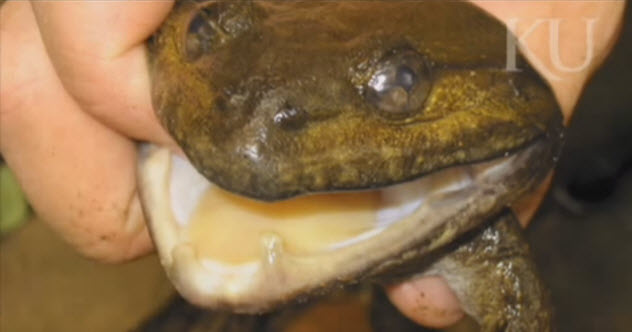
In 2008, the World Wildlife Fund sent an expedition of scientists to Southeast Asia to see what lurked in the untamed wildernesses found along the Mekong River. They pulled out with a grab bag of 163 previously unknown species, including a new species of pit viper that tried to kill them while they were in the act of capturing a new species of gecko. It was an exciting time for biodiversity everywhere, but one find managed to stick out from all the others: a fanged, killer frog.
The male Limnonectes megastomias—or Khorat frogs, as they’ve been dubbed—have two protrusions on their lower lip that they use to fight off other males. Researchers found male Khorat frogs with missing limbs from their vicious battles.
But Khorat frogs aren’t merely aquatic Spartans yearning for the fires of combat. They’re also rabid hunters. These frogs hunt like crocodiles, lying in wait in muddy streams for prey to pass within snagging distance. What kind of prey? On top of the usual frog fare of insects, Khorat frogs have developed a special taste for birds.
5 Bagworms Make Trophies Of The Dead
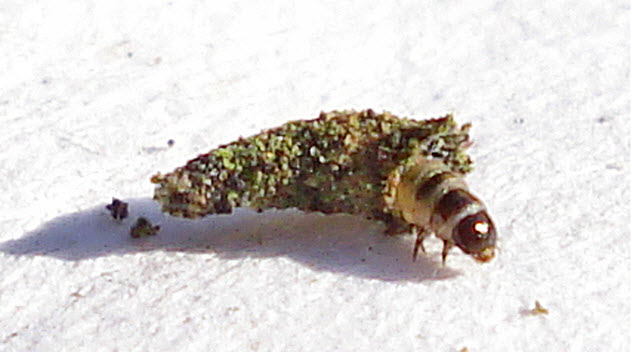
Bagworms don’t get a lot of media attention, which is a shame because these moths have a lot to offer. Members of the Psychidae family, bagworm caterpillars encase themselves in a sheath made of silk and bits of leaves. The evergreen bagworm, for example, wraps itself in woven pine needles and hangs under a branch to disguise itself as a pine cone.
Unlike caterpillars in regular cocoons, bagworm larvae are free to move around and eat leaves or lichen from their host trees. They’re usually considered pests because a lot of bagworms on a single tree can end up killing the tree.
They’re also herbivores. So imagine the surprise when researchers in the Panamanian rain forest discovered a species of bagworm that preys on other insects and sheaths itself in their dismembered body parts. The larvae attach their sheaths to the undersides of branches and dangle from the open front.
It’s theorized that they also secrete a pheromone to attract insects toward them. But whether or not that’s true, they seem to be pretty good at their jobs. The researchers who discovered them found pieces of “spiders, grasshoppers and katydids, flies, beetles, wasps and especially ants” glued unceremoniously to the caterpillars’ sheaths. After they eat their fill, they seal themselves inside the sticky mound of corpses until the time is right to emerge as a beautiful moth.
4 Giant Peruvian Centipedes Dissect Their Prey
Scolopendra gigantea is the king of things you don’t want swarming under your bedsheets. The good news is that giant Peruvian centipedes don’t swarm. The bad news is that they do just about everything else.
As the name implies, these are some of the largest centipedes in the world, commonly growing up to 30 centimeters (12 in) in length. They’re fast, agile hunters with a taste for anything that walks in front of them. They can be extremely aggressive when startled, which is how some people have died from a giant centipede’s bite.
We’ve talked before about the way giant Peruvian centipedes will dangle from the roofs of caves and snatch flying bats in midair. But one small detail we neglected to mention was the horrifying way they kill their prey.
The giant Peruvian centipede’s two front appendages are wickedly clawed legs called forcipules, which are used to inject their prey with a cocktail of neurotoxins. The venom immobilizes their prey instantly, although it can take up to three minutes to kill.
Before its victim is even dead, the centipede is already eating. With its two forcipules, the centipede will start slicing pieces off the paralyzed animal. When researchers studied bats that had been killed by centipedes in a limestone cave in Venezuela, they found that the centipedes were as ruthless as they were efficient.
Their report reads like an autopsy from hell: One bat was missing pieces of its head, its chest had been picked down to the rib cage, and its skin had been flayed away.
3 Dementor Wasps Create Zombies
When you’re named after the most evil entity in the Harry Potter universe, it’s time to take a good, hard look at your life choices. Like the soul-sucking fiends who lord over Azkaban, the Ampulex dementor turns its prey into a docile husk of its former self. Unlike the fictional dementor, the wasp then lays eggs in its prey that will eventually become tiny wasps eating their way out of the living carcass.
Preying solely on cockroaches, dementor wasps control their victims’ minds by injecting them with a potent neurotoxin that renders the cockroach unable to control its own actions. The wasp can then direct the roach by tugging on its antennae.
The cockroach’s legs will move like normal, and its feet will cling to vertical surfaces like normal. It may even understand that it’s moving. But it has no way to stop itself from crawling toward its doom. This isn’t the only case of creepy mind control in the animal kingdom, but it’s definitely one of the most devious.
2 The Ray Spider’s Slingshot Web
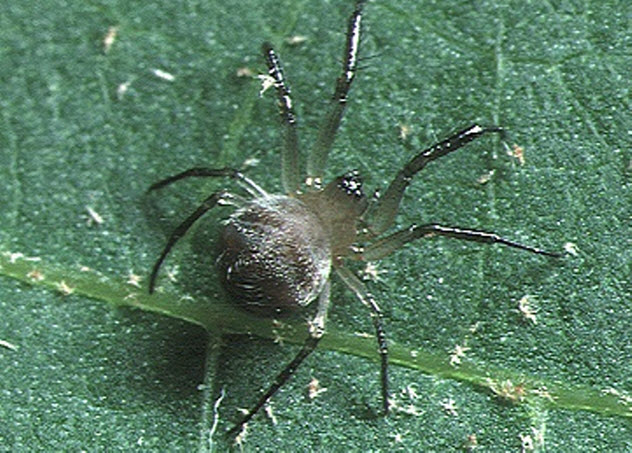
We’ve known about ray spiders for nearly a century, but little research has been done on them. The few species that we do know about are found all over the world, so it’s no surprise that this little Amazonian acrobat escaped the attention of mainstream science for so long. It’s been tentatively identified as the Naatlo splendida species by the graduate student who first observed it, but nobody’s quite sure about that, either.
What they are sure about is that the thing can put on a heck of a show. Rather than sit in its web and wait for insects to fly into it—like most web spinners—this ray spider has turned its web into a slingshot net that can nab insects out of the air.
The spider first spins its web like normal, but then it attaches a secondary string to a rock or branch behind the web. When the spider sits in the center of the web and reels in the string, the web stretches back like a rubber band. Whenever the spider senses an insect approaching (nobody’s figured out how it does that yet), the spider releases the string and shoots the web—with the spider still attached—into the oncoming insect.
The slingshot web is only about the width of a man’s palm, but that seems to be perfect for catching mosquitoes, which usually fly too slowly to stick to a spider’s web.
1 The Flea With Ancient Bubonic Plague
Finding DNA on a prehistoric insect encased in amber is a scenario we all dream about. It’s got Jurassic Park written all over it, and this time, nothing can go wrong. Unless, of course, the insect in question is a flea, and the DNA it’s carrying is an ancestor of Yersinia pestis—the bubonic plague which wiped out millions of people in the 1300s.
That’s exactly what researchers found in an amber mine in the Dominican Republic in 2015. The flea dates to about 22 million years ago, long after dinosaurs left this life to roam greener pastures. However, the discovery creates a new vector for the timeline of flea-transmitted disease.
Just as fleas were instrumental to the spread of the Black Death, this little fellow could have been spreading disease among the mammals of the early Miocene. In fact, researchers speculate that this strain of Y. pestis could well have caused the extinction of whole species.
Considering that possible flea fossils have been found dating back to the Cretaceous and Jurassic periods, entomologist George Poinar Jr. believes that disease-carrying fleas may also have played a role in the dinosaurs’ extinction. So next time you wish we still had dinosaurs, blame the fleas.
Oh, and before you go thinking that we’ve inadvertently unleashed a hibernating ancient plague on the world, rest assured that the bacteria samples are quite dead.
Eli Nixon’s new book, Mind of Tesla, is available for preorder, and keep an eye out for his upcoming zombie drug thriller, Heartland Junk.








